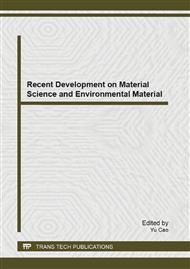p.196
p.201
p.205
p.210
p.213
p.218
p.221
p.225
p.229
Study on Ultrasonic Measurement for Non-Uniform Stress Field
Abstract:
Acoustic principle of ultrasonic measurement for stress field was introduced briefly. Longitudinal critically refracted (Lcr) wave was applied to study a non-uniform stress field in high strength 7050-T7451 aluminum alloy. Error sources of testing were investigated as well. The results indicate that ultrasound can be conveniently used to characterize non-uniform stress field with sufficient accuracy but without destruction. The measuring results represent mean stress existing in propagation path of ultrasonic. Stress field mapped by ultrasound has good coincidence with actual stress field. Temperature and coupling are main error sources of testing. As long as temperature maintains invariable, it is easy to characterize stresses with error less than 40 MPa even in different coupling condition and with other artifical variable. The measurement error induced by coupling was tolerable and reduced with increasing stress. This technique will provide a non-destructive method to measure residual stress in structures.
Info:
Periodical:
Pages:
213-217
Citation:
Online since:
September 2013
Authors:
Price:
Сopyright:
© 2013 Trans Tech Publications Ltd. All Rights Reserved
Share:
Citation:


